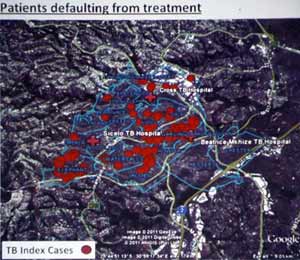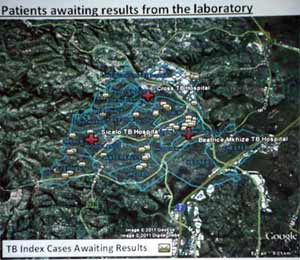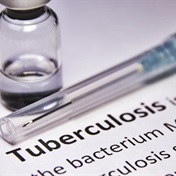Google Earth coupled with smart phone technology is being employed by the Department of Health to manage the progress of TB patients in the eThekwini district in KZN.
“When nurses visit households in the district they capture patient information into a smart phone which sends it to a centralised server,” says Dr Claudio Marra from the University Research Corporation. The smart phone also collects the GPS coordinates of the residence and marks it on Google Maps.
(TB cases marked as red)
The system marks patients’ progress with coloured dots: infection in a household is marked red, ongoing treatment is marked yellow, completed treatment is marked in green, and death in black. This enables TB-programme managers for the district to identify “TB hot spots” in the community, know the whereabouts of patients and also monitor their progress.
“This is an incredible tool for management because you know where the patients are, and you know that you have to visit the patient,” Marra explains.
Follow-up is important
(TB cases awaiting results)
TB is difficult to cure and patients have to take medication for six to nine months in order to completely rid the bacterium from their bodies. However, often patients stop taking their medication after only a couple of months because they start to feel better. In reality, the medication has only suppressed the infection but hasn’t killed it, and by quitting the medication the patient actually strengthens the bacterium, making it resistant to the medicine.
Once a patient develops drug-resistant TB, a new, more aggressive drug regime has to be started, that is much more expensive and takes even longer to cure.
Someone with drug-resistant TB spreads the drug-resistant germ and others who are infected by this person is infected with the drug-resistant kind.
For this reason, it is so important to track TB patients’ progress and to ensure that they don’t stop taking their medication prematurely.
eThekwini district
The patient mapping programme using Google Earth and smart phone technology is currently being rolled out by the DoH in KZN’s eThekwini district, and if it proves to be successful, will also be implemented in other regions of the country.
“Despite major improvements in the past decade, KwaZulu Natal remains the province with the highest burden of disease associated with underdevelopment and poverty in the country,” says Marra. “In 2010, the life expectancy in KZN is 37.” The decline in life expectancy is directly linked with HIV, TB and drug-resistant TB. – (Wilma Stassen, Health24, March 2011)
Read more:




 Publications
Publications
 Partners
Partners
















